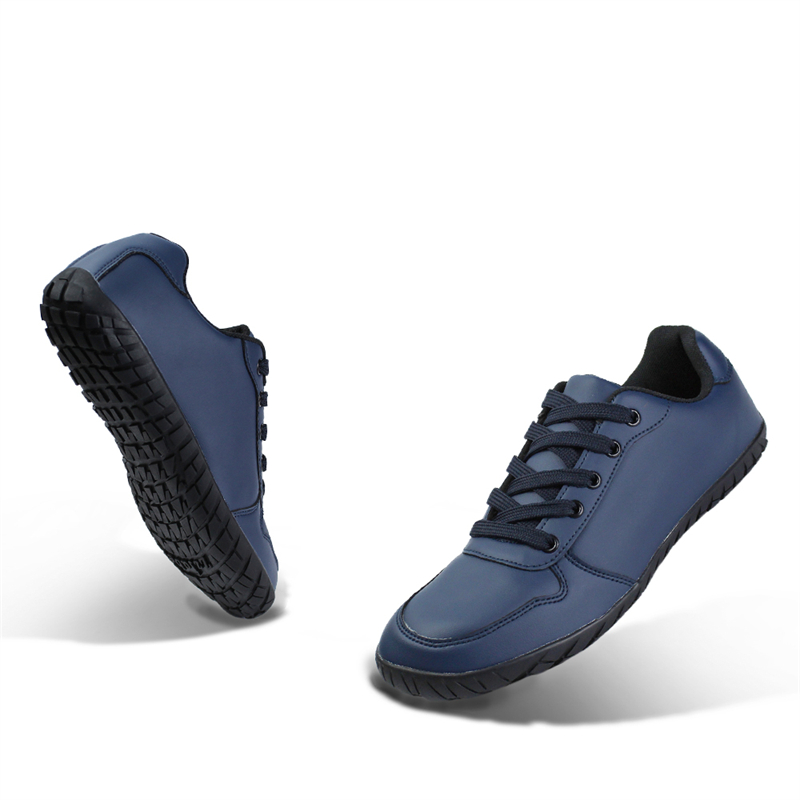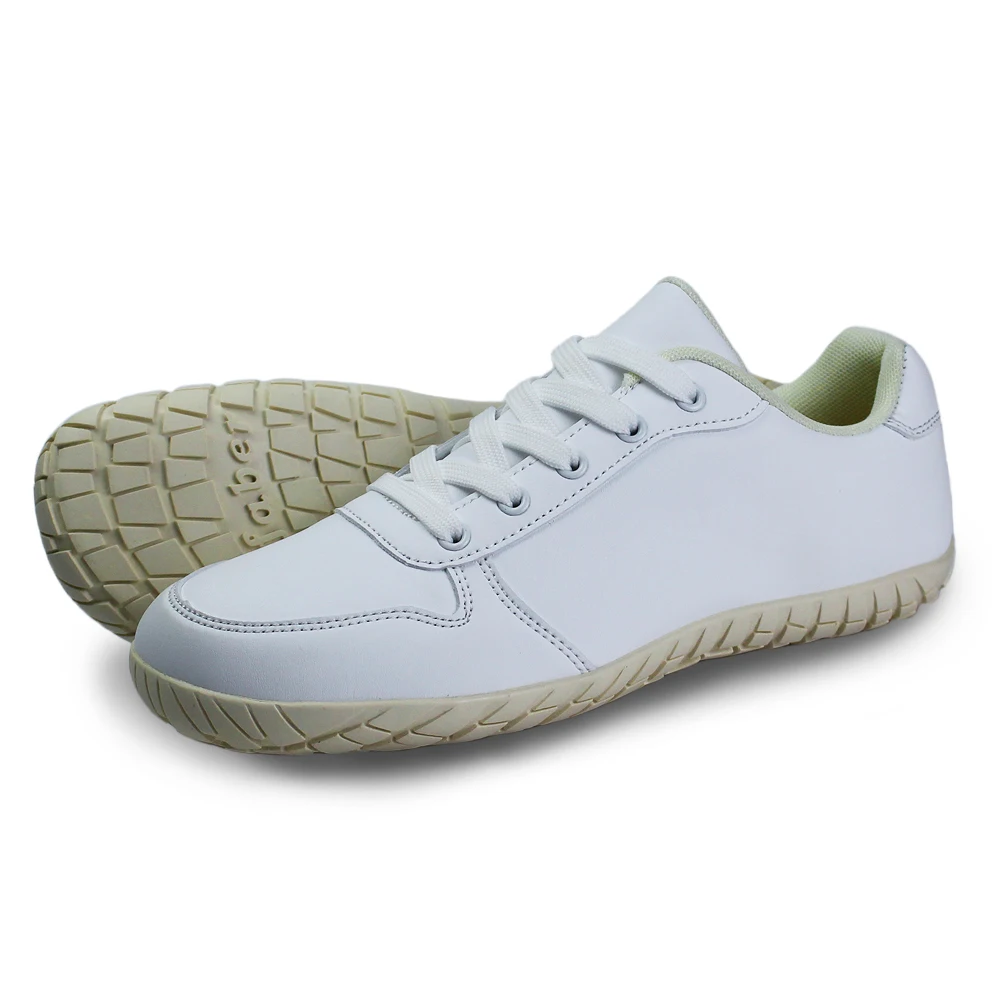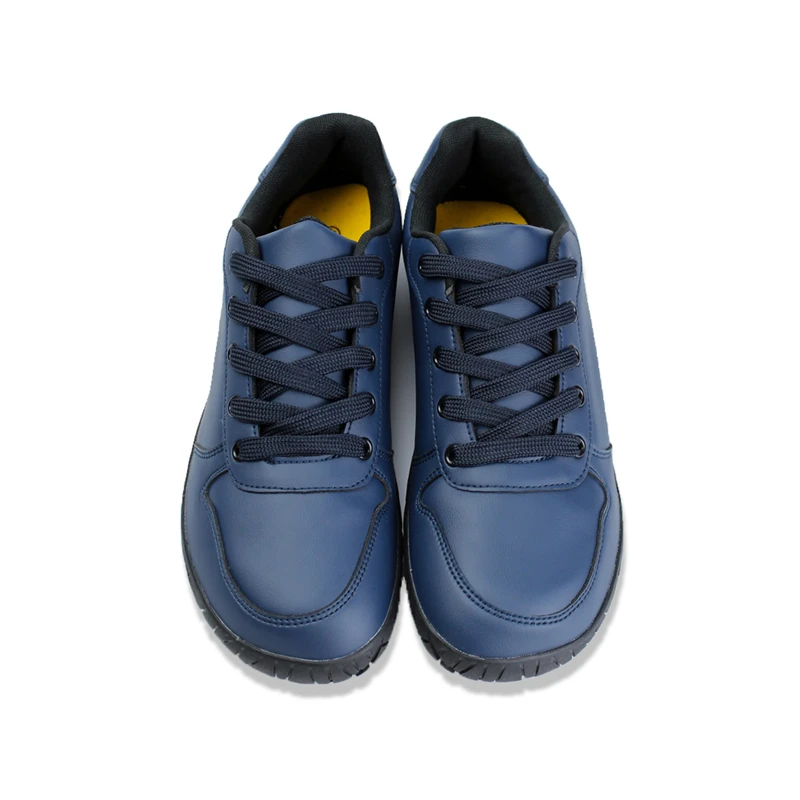Introduction to Leather Barefoot Shoes
Leather barefoot shoes have surged in popularity among people seeking a more natural and comfortable footwear option. These shoes are designed to mimic the experience of walking barefoot while providing protection and support. In this article, we will explore the benefits of leather barefoot shoes, their history, how they are made, and why they may be the perfect choice for you.

The Evolution of Barefoot Shoes
Historical Perspective
Humans have walked barefoot for millions of years. Early humans did not wear shoes as we know them today. Instead, they relied on their natural foot structure to navigate various terrains. Over time, different cultures developed basic protective coverings for their feet using materials like animal hides and plant fibers. These early forms of footwear were simple and functional, providing minimal interference with the natural mechanics of the foot.
The Birth of Modern Footwear
The modern shoe industry began to take shape during the Industrial Revolution. With advancements in manufacturing and materials, shoes became more structured and supportive. While these developments offered certain benefits, they also altered the natural movement of the foot. Traditional shoes often constrict the toes, elevate the heels, and provide excessive cushioning, which can lead to various foot problems over time.
Rediscovering the Benefits of Barefoot Walking
In recent decades, there has been a growing interest in rediscovering the benefits of walking and running barefoot. This movement is driven by research showing that barefoot walking can improve foot strength, balance, and overall health. Leather barefoot shoes emerged as a solution that combines the protective qualities of modern footwear with the natural feel of being barefoot.

Understanding Barefoot Shoes
What Are Barefoot Shoes?
Barefoot shoes, also known as minimalist shoes, are designed to allow your feet to move naturally. Unlike traditional shoes, barefoot shoes have a thin, flexible sole that provides minimal cushioning and support. This design encourages you to use the muscles in your feet and legs more effectively, promoting a healthier gait and posture.
Key Features of Barefoot Shoes
Several key features distinguish barefoot shoes from traditional footwear:
- Thin Soles: Barefoot shoes have thin soles that allow you to feel the ground beneath your feet. This sensory feedback improves balance and proprioception.
- Wide Toe Box: The toe box in barefoot shoes is wider than in traditional shoes, giving your toes ample room to splay and move naturally.
- Zero Drop: Barefoot shoes have zero drop from heel to toe, meaning there is no elevation difference. This promotes a more natural stride and reduces strain on the lower body.
- Flexible Materials: The materials used in barefoot shoes are flexible, allowing your feet to bend and flex naturally with each step.
Why Choose Leather for Barefoot Shoes?
Leather is a popular material for barefoot shoes due to its unique properties. Leather is durable, breathable, and molds to the shape of your foot over time. This makes leather barefoot shoes comfortable and long-lasting. Additionally, leather provides a stylish and versatile look that can be dressed up or down.
Benefits of Wearing Leather Barefoot Shoes
Improved Foot Health
One of the primary benefits of wearing leather barefoot shoes is improved foot health. Traditional shoes with narrow toe boxes and high heels can cause various foot problems, such as bunions, hammertoes, and plantar fasciitis. Leather barefoot shoes allow your feet to move naturally, reducing the risk of these issues. The wide toe box and flexible sole promote proper alignment and strengthen the muscles in your feet.
Enhanced Comfort
Leather barefoot shoes offer enhanced comfort compared to traditional footwear. The soft, supple leather conforms to the shape of your foot, providing a custom fit. The thin sole allows you to feel the ground beneath your feet, giving you a sense of connection with your environment. This natural feel is often described as liberating and enjoyable.
Better Posture and Balance
Wearing leather barefoot shoes can improve your posture and balance. The zero-drop design encourages you to stand and walk with a more upright posture. This reduces strain on your lower back and joints. The sensory feedback from the thin sole helps you maintain better balance, which can reduce the risk of falls and injuries.
Strengthened Muscles
Walking in leather barefoot shoes engages the muscles in your feet and legs more effectively. This helps to strengthen these muscles over time, improving your overall foot strength. Stronger foot muscles can lead to better performance in activities like running, hiking, and even everyday walking.

Versatility and Style
Leather barefoot shoes are versatile and stylish. They can be worn in various settings, from casual outings to more formal occasions. The natural look of leather pairs well with different outfits, making it easy to incorporate barefoot shoes into your wardrobe. Whether you’re going to work, running errands, or enjoying a night out, leather barefoot shoes can complement your style.
How Leather Barefoot Shoes Are Made
Material Selection
The quality of leather used in barefoot shoes is crucial for their durability and comfort. High-quality, full-grain leather is often preferred because it is strong and breathable. The tanning process is also important, as it affects the leather’s softness and flexibility. Vegetable-tanned leather is a popular choice for its eco-friendly properties and natural finish.
Designing the Shoe
Designing leather barefoot shoes involves several steps. First, the shape and size of the shoe are determined based on ergonomic principles. The goal is to create a shoe that fits comfortably and allows for natural movement. Next, patterns are created for the various parts of the shoe, including the upper, sole, and lining. These patterns are used to cut the leather pieces precisely.
Assembling the Shoe
Assembling leather barefoot shoes requires skilled craftsmanship. The leather pieces are sewn together using strong, durable threads. The stitching must be precise to ensure a secure and comfortable fit. The sole is attached to the upper using adhesives or stitching, depending on the design. Finally, any additional features, such as laces or buckles, are added.
Quality Control
Quality control is an essential part of the manufacturing process. Each pair of leather barefoot shoes undergoes rigorous inspection to ensure that they meet the brand’s standards. This includes checking for any defects in the leather, ensuring that the stitching is secure, and verifying that the shoes fit properly. By maintaining high quality control standards, manufacturers can guarantee that customers receive a reliable and comfortable product.
Choosing the Right Pair of Leather Barefoot Shoes
Identifying Your Needs
When choosing a pair of leather barefoot shoes, it’s important to identify your needs. Consider how you plan to use the shoes and what features are most important to you. If you need shoes for everyday wear, look for a versatile design that can be dressed up or down. If you need shoes for specific activities, such as running or hiking, choose a model that offers the necessary support and protection.
Sizing and Fit
Proper sizing and fit are crucial for the comfort and effectiveness of leather barefoot shoes. These shoes should fit snugly but not tightly. Your toes should have enough room to splay naturally, and the shoe should not constrict any part of your foot. It’s a good idea to try on several sizes and styles to find the best fit. Remember that leather will stretch and mold to your foot over time, so a slightly snug fit initially is acceptable.
Evaluating Features
Evaluate the features of different leather barefoot shoes to find the best pair for you. Look for a wide toe box, a thin and flexible sole, and a zero-drop design. Check the quality of the leather and the craftsmanship. Consider any additional features that may be important to you, such as waterproofing, insulation, or extra padding.

Reading Reviews
Reading reviews from other customers can provide valuable insights into the performance and comfort of leather barefoot shoes. Look for reviews that discuss the fit, durability, and overall experience of wearing the shoes. Keep in mind that individual preferences and experiences can vary, so consider multiple reviews to get a well-rounded perspective.
Caring for Your Leather Barefoot Shoes
Cleaning and Maintenance
Proper cleaning and maintenance are essential to keep your leather barefoot shoes looking good and lasting longer. Use a soft brush or cloth to remove dirt and debris from the surface. For deeper cleaning, use a leather cleaner that is suitable for the type of leather used in your shoes. After cleaning, apply a leather conditioner to keep the leather soft and supple.
Protecting the Leather
Protecting the leather of your barefoot shoes can help prevent damage and extend their lifespan. Apply a waterproofing spray to protect against moisture and stains. Be sure to follow the manufacturer’s instructions and test the product on a small area first. Store your shoes in a cool, dry place away from direct sunlight when not in use.
Regular Inspections
Regularly inspect your leather barefoot shoes for signs of wear and tear. Check the stitching, sole, and leather for any damage. Address any issues promptly to prevent further deterioration. If the soles become worn or the stitching starts to come undone, consider taking your shoes to a professional cobbler for repairs.
Rotating Your Shoes
Rotating your shoes can help them last longer and maintain their shape. Avoid wearing the same pair of shoes every day. Instead, alternate between different pairs to give each one a chance to air out and recover. This practice can also help prevent foot odor and prolong the life of the leather.
Transitioning to Leather Barefoot Shoes
Gradual Transition
Transitioning to leather barefoot shoes requires a gradual approach, especially if you are used to wearing traditional footwear. Start by wearing your new barefoot shoes for short periods each day. Gradually increase the duration as your feet become accustomed to the new feel. This gradual transition helps prevent discomfort and allows your muscles to adapt.
Listening to Your Body
Pay attention to how your body responds to the change. Some initial soreness or discomfort is normal as your muscles adjust, but severe pain or injuries are not. If you experience any significant issues, take a break and consult a healthcare professional if needed. Listening to your body and making adjustments as necessary will help ensure a smooth transition.
Incorporating Foot Exercises
Incorporating foot exercises into your routine can help strengthen your feet and prepare them for wearing leather barefoot shoes. Exercises such as toe spreads, calf raises, and arch lifts can improve foot strength and flexibility. Performing these exercises regularly can enhance your overall foot health and make the transition to barefoot shoes easier.
Building Up Mileage
If you plan to use leather barefoot shoes for running or other high-impact activities, build up your mileage gradually. Start with short distances and slowly increase as your feet and legs adapt. Avoid pushing yourself too hard too quickly, as this can lead to injuries. Patience and consistency are key to successfully transitioning to barefoot running or other activities.

Conclusion
Leather barefoot shoes offer a unique blend of natural movement, comfort, and style. By allowing your feet to move naturally, these shoes promote better foot health, improved posture, and enhanced balance. The durability and versatility of leather make these shoes a practical choice for various activities and settings. Whether you’re new to barefoot footwear or looking to expand your collection, leather barefoot shoes provide a compelling option for those seeking a more natural and comfortable walking experience. Embrace the benefits of leather barefoot shoes and take a step towards healthier, happier feet.
